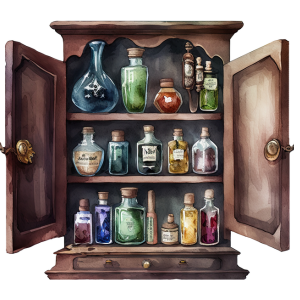Herbal Remedies with Extraordinary Benefits
Ginseng (Panax ginseng)
Historical Context: Ginseng, known as the "root of life," has been used for over 2,000 years in Traditional Chinese Medicine (TCM) to boost energy and vitality. Ancient Chinese emperors valued ginseng so highly that it was often worth more than its weight in gold.
Traditional Usage: Ginseng was used to improve energy levels, enhance immunity, and reduce stress.
Preparation Steps:
- Ingredients: Sliced ginseng root 2 ounces, 1 cup of water.
- Instructions On How To Make A Decoction: Simmer the ginseng root in water for 30 minutes. Strain and drink as a tonic to boost energy and vitality.
Scientific Support: Studies have shown that ginseng can enhance cognitive function, reduce fatigue, and improve overall well-being (Reay et al., 2005).
Anecdote: According to legend, a poor farmer discovered ginseng when he noticed how the root revitalized his ailing horse. The farmer became wealthy by selling the herb, and ginseng’s reputation as a powerful tonic spread throughout China.
Astragalus (Astragalus membranaceus)
Historical Context: Astragalus, known as "Huang Qi" in Chinese, has been used for centuries to strengthen the body's Wei Qi, or protective energy, to ward off illness.
Traditional Usage: Astragalus was used to boost the immune system, fight infections, and improve stamina.
Preparation Steps:
- Ingredients: Dried astragalus root, 1 cup of water.
- Instructions: Simmer the root in water for 20-30 minutes. Strain and drink daily during cold and flu season to support immunity.
Scientific Support: Research indicates that astragalus enhances the immune response and may help protect against viral infections (Block & Mead, 2003).
Anecdote: In ancient China, warriors would carry astragalus root into battle, believing it would protect them from illness and strengthen their endurance.
Schisandra (Schisandra chinensis)
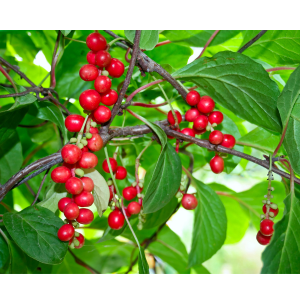 Historical Context: Known as the "five-flavor fruit" because it contains all five basic flavors (sweet, sour, salty, bitter, and pungent), schisandra has been revered in TCM for its ability to balance the body's energy.
Historical Context: Known as the "five-flavor fruit" because it contains all five basic flavors (sweet, sour, salty, bitter, and pungent), schisandra has been revered in TCM for its ability to balance the body's energy.
Traditional Usage: Schisandra was used to promote longevity, improve mental clarity, and protect the liver.
Preparation Steps:
- Ingredients: Dried schisandra berries, 1 cup of water.
- Instructions On How To Make A Decoction: Steep the berries in boiling water for 10-15 minutes. Strain and drink to enhance mental clarity and support liver function.
Scientific Support: Schisandra has been shown to protect the liver and improve cognitive function, making it a valuable herb in TCM (Panossian & Wikman, 2008).
Anecdote: Emperors of the Ming Dynasty were said to consume schisandra to maintain youthful vigor and clear thinking, attributing their longevity to this powerful berry.
Dong Quai (Angelica sinensis)
Historical Context: Often referred to as the "female ginseng," Dong Quai has been a staple in Chinese herbal medicine for over 2,000 years, particularly in treating women's health issues.
Traditional Usage: Dong Quai was used to regulate menstrual cycles, relieve menopausal symptoms, and support reproductive health.
Preparation Steps:
- Ingredients: Dried Dong Quai root, 1 cup of water.
- Instructions On How To Make A Decoction: Simmer the root in water for 20-30 minutes. Strain and drink to support menstrual health and relieve cramps.
Scientific Support: Studies show that Dong Quai can help alleviate menstrual pain and balance hormones (Kessel, 2003).
Anecdote: Dong Quai was traditionally prescribed to women in the imperial court to maintain their beauty and fertility, earning it a reputation as a "blood tonic."
Goji Berry (Lycium barbarum)
Historical Context: Goji berries, also known as "red diamonds," have been used in TCM for over 2,000 years to promote longevity and improve eye health.
Traditional Usage: Goji berries were used to nourish the liver, improve vision, and boost energy.
Preparation Steps:
- Ingredients: Dried goji berries, 1 cup of water.
- Instructions For Making An Infusion: Steep the berries in boiling water for 10 minutes, then drink the tea and eat the berries to enhance vitality and improve eye health.
Scientific Support: Goji berries are rich in antioxidants and have been shown to support eye health and immune function (Amagase & Nance, 2008).
Anecdote: A Chinese herbalist named Li Qing Yuen, who allegedly lived for 256 years, credited his longevity to a daily dose of goji berries.
Reishi Mushroom (Ganoderma lucidum)
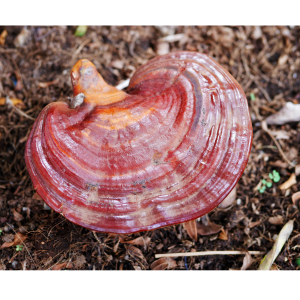 Historical Context: Known as the "mushroom of immortality," reishi has been used in TCM for over 2,000 years. It was so highly prized that it was once reserved exclusively for emperors.
Historical Context: Known as the "mushroom of immortality," reishi has been used in TCM for over 2,000 years. It was so highly prized that it was once reserved exclusively for emperors.
Traditional Usage: Reishi was used to boost the immune system, reduce stress, and promote longevity.
Preparation Steps:
- Ingredients: Dried reishi mushroom slices, 1 cup of water.
- Instructions On How To Make A Decoction: Simmer the slices in water for 30-45 minutes. Strain and drink as a tonic to support overall health and longevity.
Scientific Support: Reishi has been found to enhance immune function and reduce inflammation, supporting its traditional use in TCM (Wachtel-Galor et al., 2011).
Anecdote: Ancient Taoist monks revered reishi for its ability to calm the mind and spirit, believing it could help them achieve spiritual enlightenment.
Licorice Root (Glycyrrhiza uralensis)
 Historical Context: Licorice root, known as "Gan Cao" in Chinese, has been used in TCM for over 3,000 years. It is often called the "great harmonizer" for its ability to enhance the effects of other herbs.
Historical Context: Licorice root, known as "Gan Cao" in Chinese, has been used in TCM for over 3,000 years. It is often called the "great harmonizer" for its ability to enhance the effects of other herbs.
Traditional Usage: Licorice root was used to soothe sore throats, reduce inflammation, and balance energy.
Preparation Steps:
- Ingredients: Dried licorice root, 1 cup of water.
- Instructions On How To Make A Decoction: Simmer the root in water for 15-20 minutes. Strain and drink to soothe a sore throat or ease digestive discomfort.
Scientific Support: Licorice root has been shown to have anti-inflammatory and immune-boosting properties (Fiore et al., 2005).
Anecdote: In ancient China, licorice was so valuable that it was often used as currency. It was also a common ingredient in herbal elixirs meant to "harmonize" the body's energy.
Chinese Skullcap (Scutellaria baicalensis)
Historical Context: Chinese skullcap, known as "Huang Qin," has been used in TCM for over 2,000 years, primarily to clear heat and dampness from the body.
Traditional Usage: Chinese skullcap was used to treat respiratory infections, reduce fever, and calm the nervous system.
Preparation Steps:
- Ingredients: Dried Chinese skullcap root, 1 cup of water.
- Instructions On How To Make A Decoction: Simmer the root in water for 20-30 minutes. Strain and drink to reduce fever and support respiratory health.
Scientific Support: Chinese skullcap contains baicalin, a compound with potent anti-inflammatory and antiviral effects (Li-Weber, 2009).
Anecdote: During the Qing Dynasty, Chinese skullcap was used by royal physicians to treat fevers and respiratory infections in the imperial family, earning it a reputation as a powerful healing herb.
Chinese Angelica (Angelica dahurica)
Historical Context: Also known as "Bai Zhi," Chinese angelica has been used in TCM for centuries to treat headaches, sinus issues, and skin conditions.
Traditional Usage: Chinese angelica was used to relieve headaches, clear sinuses, and treat skin infections.
Preparation Steps:
- Ingredients: Dried Chinese angelica root, 1 cup of water.
- Instructions On How To Make A Decoction: Simmer the root in water for 15-20 minutes. Strain and drink to relieve headaches or apply topically to treat skin infections.
Scientific Support: Chinese angelica has anti-inflammatory and antimicrobial properties, supporting its traditional use for headaches and skin conditions (Nakamura et al., 2003).
Anecdote: In ancient China, Chinese angelica was often prescribed to scholars and poets who suffered from "scholar's headache," believed to be caused by excessive mental work.
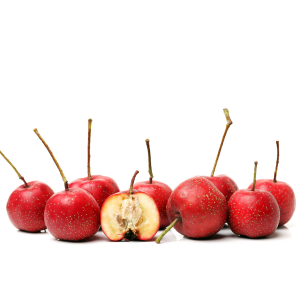 Hawthorn (Crataegus pinnatifida)
Hawthorn (Crataegus pinnatifida)
Historical Context: Known as "Shan Zha," hawthorn has been used in TCM for over 1,000 years, particularly as a digestive aid and heart tonic.
Traditional Usage: Hawthorn was used to improve digestion, support heart health, and lower blood pressure.
Preparation Steps:
- Ingredients: Dried hawthorn berries, 1 cup of water.
- Instructions On How To Make A Decoction: Steep the berries in boiling water for 10-15 minutes. Strain and drink to improve digestion and support heart health.
Scientific Support: Hawthorn has been shown to improve heart function and reduce blood pressure (Pittler et al., 2008).
Anecdote: Hawthorn was traditionally consumed after large feasts to aid digestion, and it was also a common ingredient in love potions, believed to open the heart to new romances.
Jujube (Ziziphus jujuba)
Historical Context: Jujube, or "Da Zao," has been used in TCM for over 2,500 years to nourish the blood, calm the mind, and strengthen the digestive system.
Traditional Usage: Jujube was used to alleviate stress, improve sleep, and boost digestive health.
Preparation Steps:
- Ingredients: Dried jujube fruits, 1 cup of water.
- Instructions On How To Make A Decoction: Steep the fruits in boiling water for 10-15 minutes. Strain and drink to calm the mind and improve sleep.
Scientific Support: Jujube has been found to have sedative effects, supporting its use for anxiety and insomnia (Peng et al., 2000).
Anecdote: Jujube was often included in the diets of ancient Chinese scholars and monks to improve their focus and serenity during meditation.
Dang Shen (Codonopsis pilosula)
Historical Context: Dang Shen, often referred to as "poor man's ginseng," has been used in TCM for centuries as a more affordable alternative to ginseng, prized for its energy-boosting properties.
Traditional Usage: Dang Shen was used to strengthen the immune system, increase energy, and nourish the blood.
Preparation Steps:
- Ingredients: Dried Dang Shen root, 1 cup of water.
- Instructions On How To Make A Decoction: Simmer the root in water for 20-30 minutes. Strain and drink to boost energy and support overall health.
Scientific Support: Dang Shen has been shown to enhance immune function and improve physical endurance (Yue et al., 2015).
Anecdote: In ancient China, Dang Shen was often given to laborers and soldiers to increase their stamina and resilience during long days of work or battle.
Lotus Seed (Nelumbo nucifera)
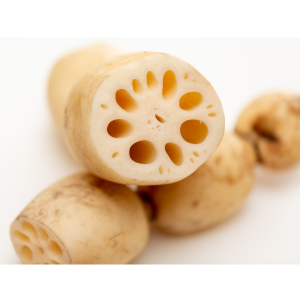 Historical Context: Lotus seeds, known as "Lian Zi," have been used in TCM for over 2,000 years. They symbolize purity and longevity and are often used in both food and medicine.
Historical Context: Lotus seeds, known as "Lian Zi," have been used in TCM for over 2,000 years. They symbolize purity and longevity and are often used in both food and medicine.
Traditional Usage: Lotus seeds were used to strengthen the spleen, calm the mind, and promote restful sleep.
Preparation Steps:
- Ingredients: Dried lotus seeds, 1 cup of water.
- Instructions On How To Make A Decoction: Simmer the seeds in water for 30 minutes. Strain and drink to calm the mind and promote digestion.
Scientific Support: Lotus seeds contain antioxidants and have been shown to improve sleep quality and support digestive health (Jung et al., 2010).
Anecdote: In Chinese mythology, the lotus is associated with the goddess of mercy, Guanyin, who is often depicted holding a lotus flower, symbolizing purity and enlightenment.
Rhodiola (Rhodiola rosea)
Historical Context: Although not native to China, Rhodiola, known as "Hong Jing Tian" in Chinese, has been used in TCM for its adaptogenic properties, helping the body adapt to stress.
Traditional Usage: Rhodiola was used to reduce fatigue, enhance mental performance, and support the body's response to stress.
Preparation Steps:
- Ingredients: Dried Rhodiola root, 1 cup of water.
- Instructions On How To Make A Decoction: Simmer the root in water for 15-20 minutes. Strain and drink to reduce stress and improve endurance.
Scientific Support: Rhodiola has been shown to reduce fatigue and improve cognitive function under stress (Panossian et al., 2010).
Anecdote: Rhodiola was traditionally used by Tibetan monks to improve concentration during meditation and by Chinese soldiers to enhance their endurance at high altitudes.
He Shou Wu (Polygonum multiflorum)
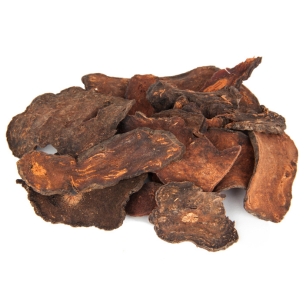 Historical Context: He Shou Wu, also known as "Fo-Ti," has been used in TCM for over 1,000 years. It is believed to restore vitality and reverse gray hair, making it a popular remedy for longevity.
Historical Context: He Shou Wu, also known as "Fo-Ti," has been used in TCM for over 1,000 years. It is believed to restore vitality and reverse gray hair, making it a popular remedy for longevity.
Traditional Usage: He Shou Wu was used to nourish the blood, enhance hair health, and promote longevity.
Preparation Steps:
- Ingredients: Processed He Shou Wu root, 1 cup of water.
- Instructions On How To Make A Decoction: Simmer the root in water for 30 minutes. Strain and drink to promote hair health and overall vitality.
Scientific Support: He Shou Wu has been found to have antioxidant properties and may support hair growth and delay aging (Dong et al., 2014).
Anecdote: According to Chinese legend, a man named He Tianer discovered the rejuvenating properties of this herb after consuming it and regaining his youthful appearance and vigor, inspiring its use as a longevity tonic.
Are you new to using herbs and feeling a bit unsure about where to start with preparing a decoction or infusion? Don’t worry—you’re not alone! We’ve created a comprehensive, easy-to-follow guide that covers everything you need to know about using herbs. Whether you're a complete beginner or just looking to refine your skills, our guide will walk you through each step with clear instructions and helpful tips. Click here to explore our detailed guide and start your herbal journey with confidence!
You’ve now uncovered the secrets of 15 incredible Chinese herbal remedies, cherished for centuries in Traditional Chinese Medicine (TCM) for their remarkable ability to enhance health and well-being. This article has guided you through the rich history and traditions behind each herb, showing just how easy it is to incorporate these ancient practices into your daily routine. With detailed steps and modern scientific backing, you’re equipped to boost your immunity, reduce stress, improve digestion, and elevate your overall vitality. Now, it’s time to bring this ancient wisdom into your life and experience these natural, powerful health benefits firsthand. Start your journey to better health today!


